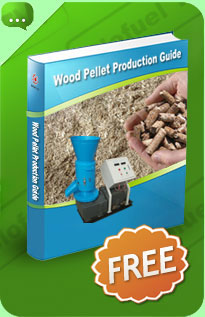Pelleting Systems
What is called advanced pelleting systems? The answer is high quality pellets via a groundbreaking process.
Advanced pelleting systems shall guarantees animal feed at the highest level of hygiene and the process mixes steam and feed particles homogenously at a processing temperature of up a high degrees Celsius.
In this kind of pelleting systems, The module controls the subsequent dwell time of the mixed material. The "first in, first out" principle guarantees a uniform thermal treatment of all particles over the course of 30 to 240 seconds. The treatment significantly lowers the amount of pathogenic microorganisms.
The pelleting systems come with an electric surface heating system and heating pads on the inlet for highest feed safety.
Selecting the hygienising mode is a wide step in advanced pelleting systems, which ensuring maximum product quality and reduces the risk of contamination during start-up.
Excellent sanitation with dirt-resistant surfaces and automatic cleaning.
Machine components in advanced pelleting systems that come in contact with the product are made of stainless steel, offering greater protection against impurities.
The pelleting systems feature automatic heating and drying before and after production via heating pads and an optional hot-air system for shorter start-up and cleaning times.
Optimized discharge, equipped within pelleting systems, with minimum product residues simplifies cleaning and protects against cross-contamination.
Large-scale, wide-opening access doors make cleaning and maintenance more convenient.
Lower operating costs through innovative drive technology.
Nowadays, some of the pellet pelleting systems in most European pellet production is in large-scale industrial manufacture, often integrated with some very huge equipment, such as a large sawmill or heat user. A large line typically produces 5t/hr, although some plants can produce up to 30t/hr. But on the other side, in majority of developing countries, family scale and home use scale are more popular, the pelleting systems used in the area presents relatively smaller and flexible equipment, which means, of course, the capacity will reduced to a level match with the family or house use demand. The feedstock to these pelleting systems is normally wet sawdust or wet or seasoned woodchip which is dried during the production process. Large pelleting systems have lower per unit costs compared to smaller pelleting systems, but extra transport costs in sourcing feedstock from further away can erode this advantage. For a small pelletizing line, the owner normally takes local dry feedstock – shavings, chips, offcuts, slabwood and recycled wood - which is ground into sawdust. Small-scale pelleting systems are available with an output of 200-300kg per hour but systems as low as 50-100kg/h are also possible. Some producers have more than one pelleting systems, producing pellets to different commercial and household market specifications.
Animal feed or grass mills can be used to pelletize wood on small pelleting systems. Grass has similar characteristics to wood for pelleting systems and as grass mills are used only from April to October they offer an opportunity for small-scale wood pelleting systems during the winter. This presents the possibility of a more gradual start-up and lower initial capital costs. However, grass and animal feed pelletizing equipment has a lower output when pelletizing wood and modifications to method and material handling are necessary.

